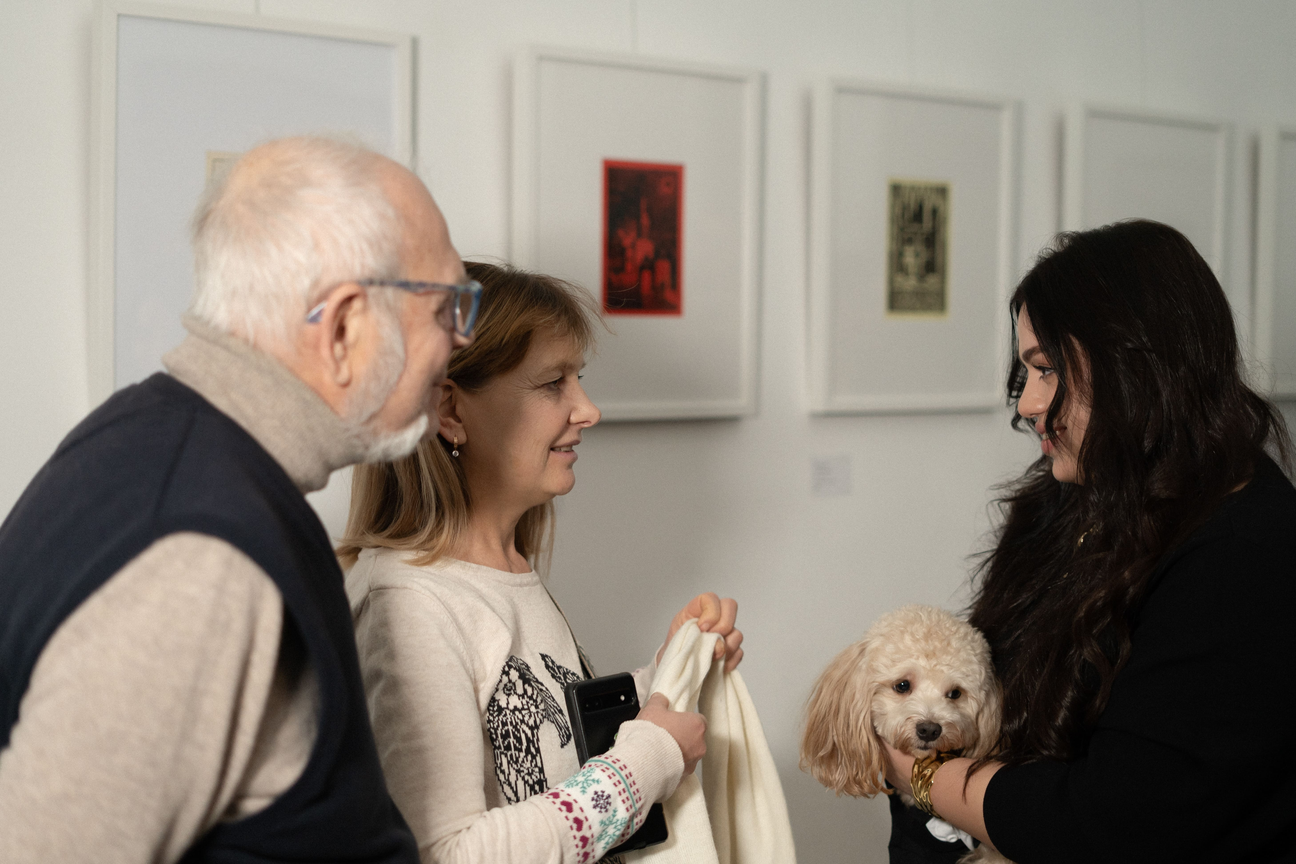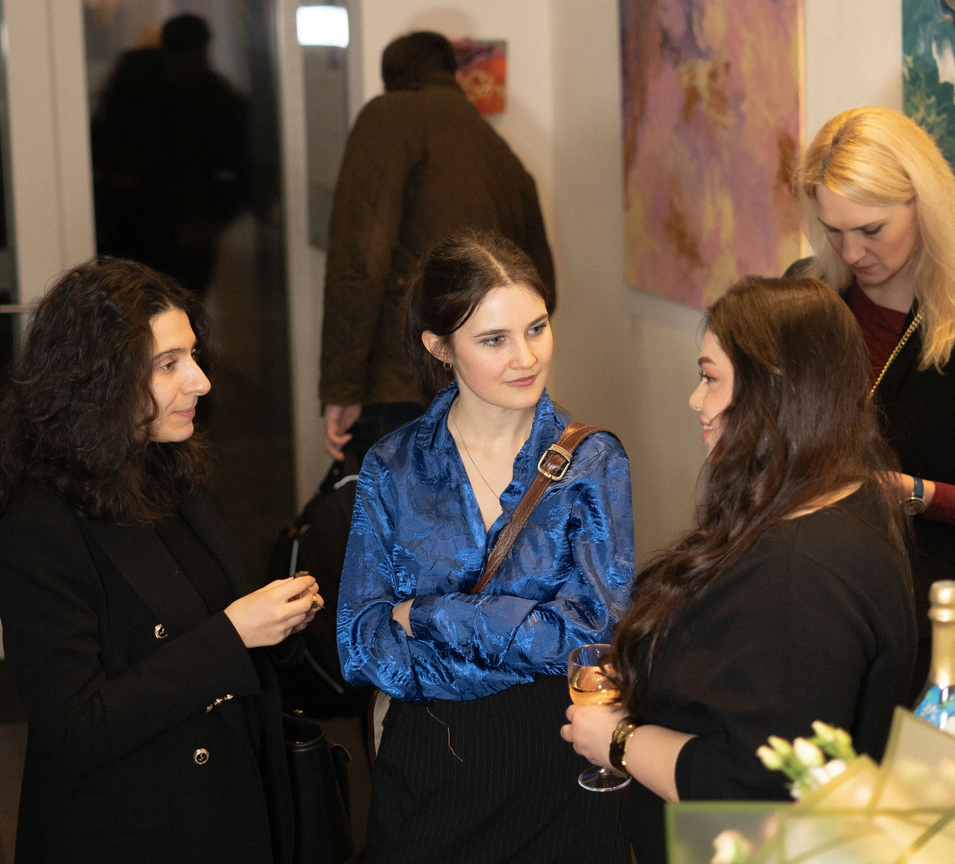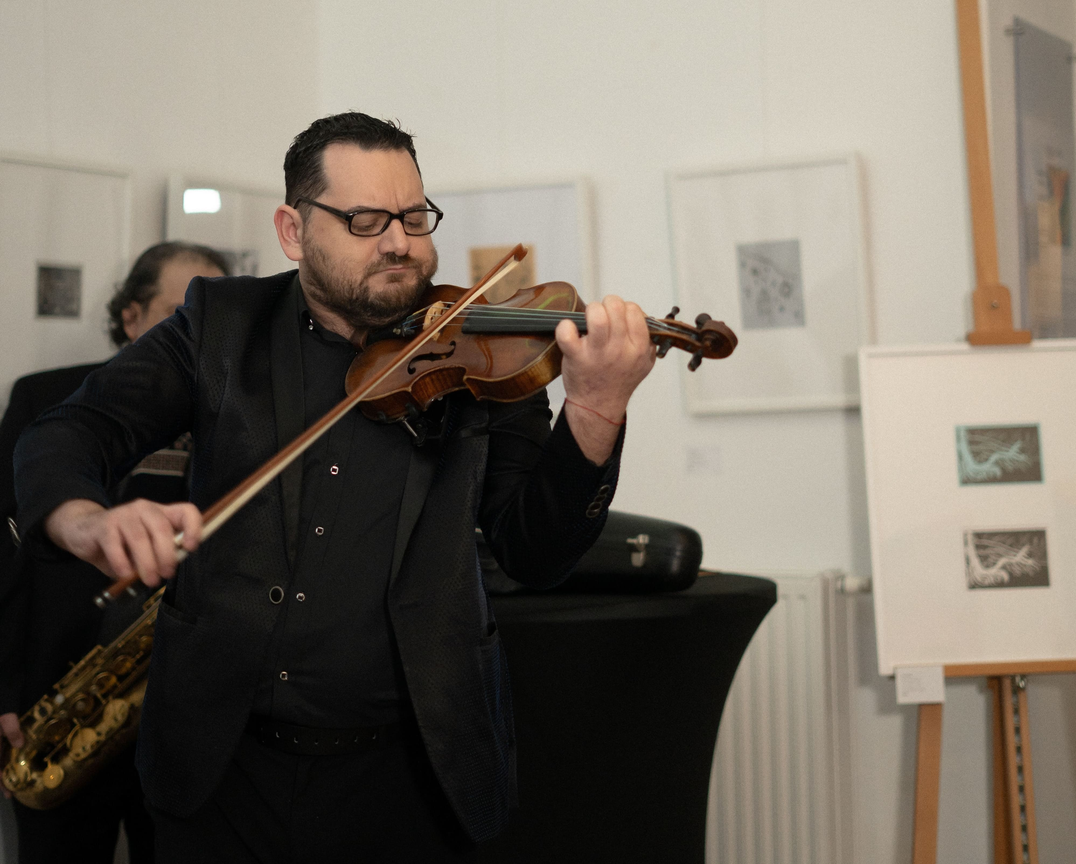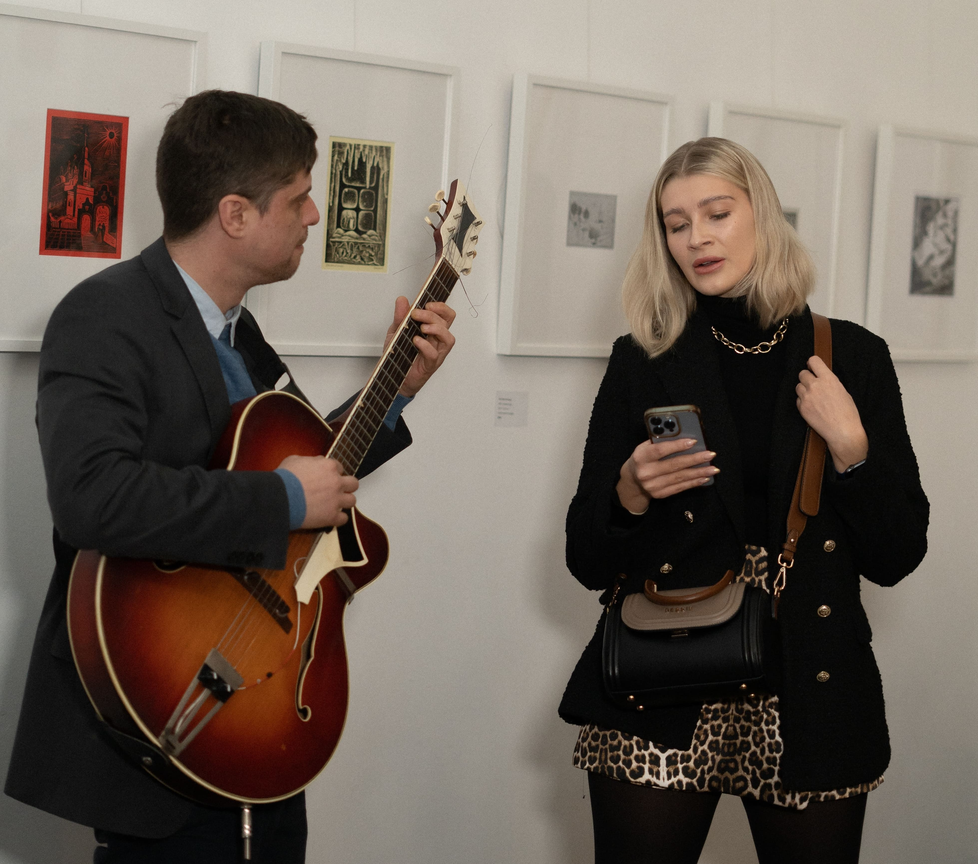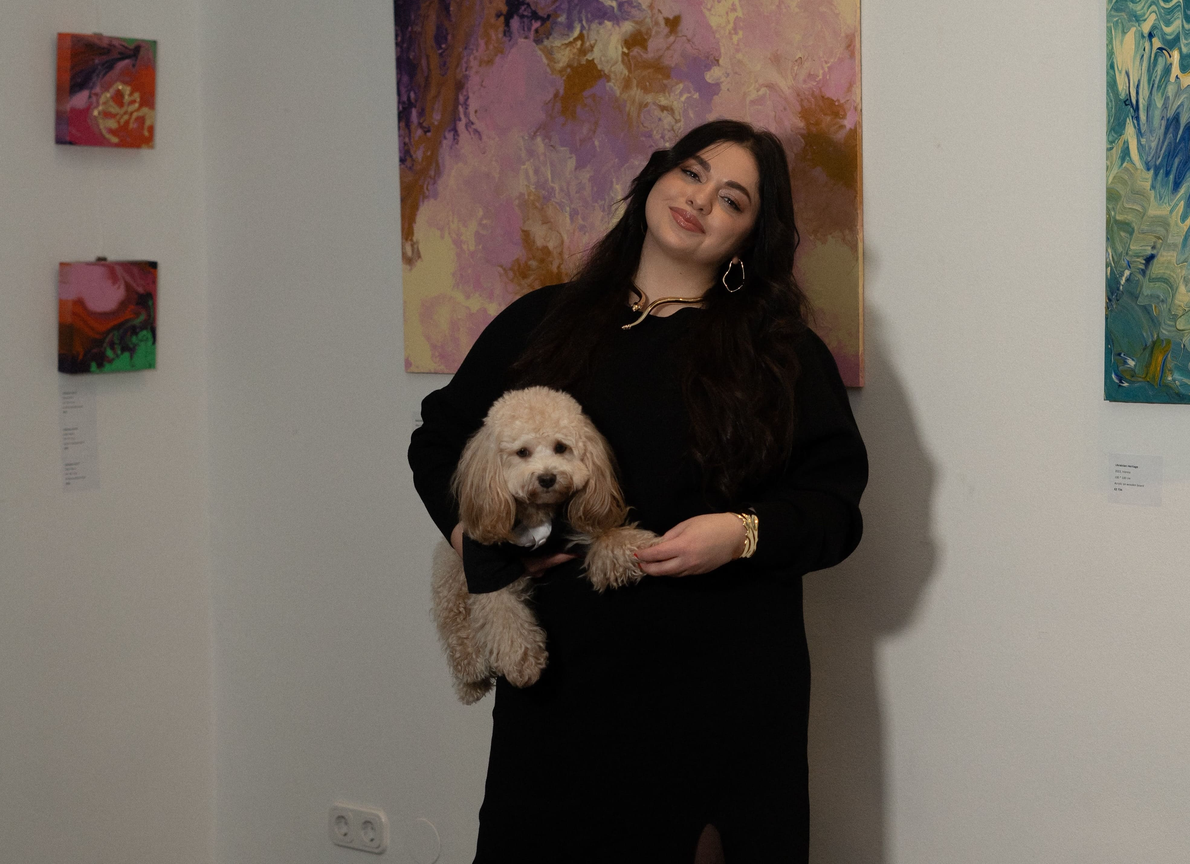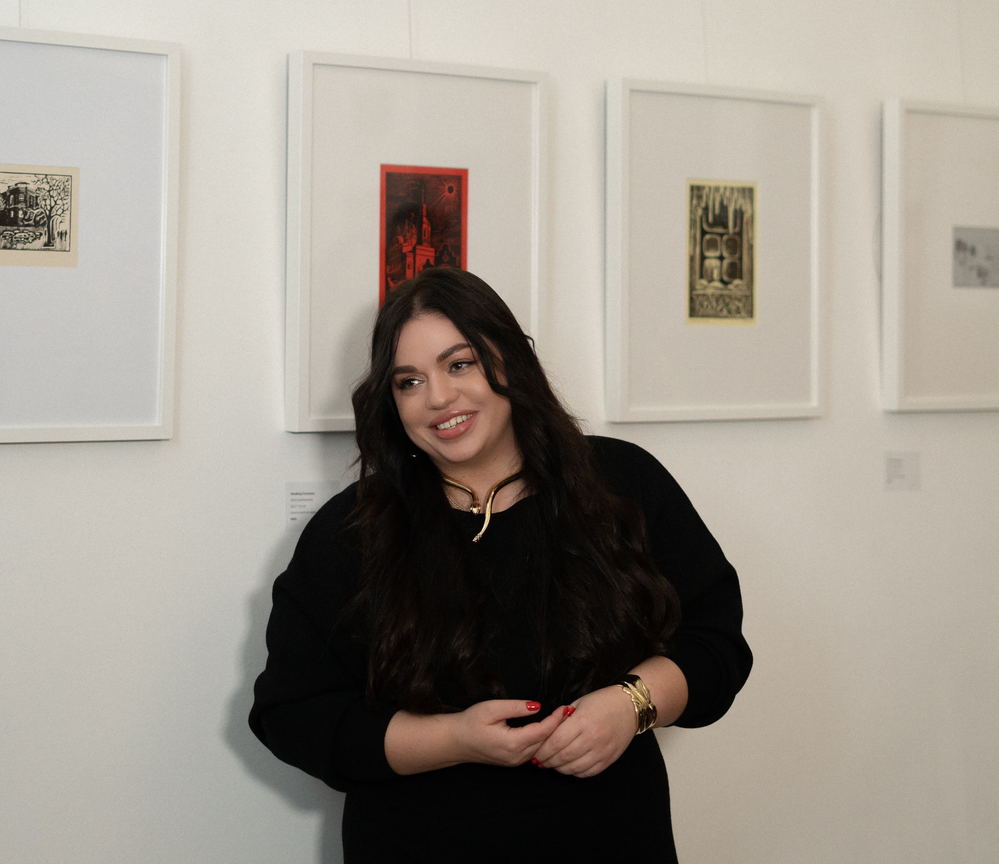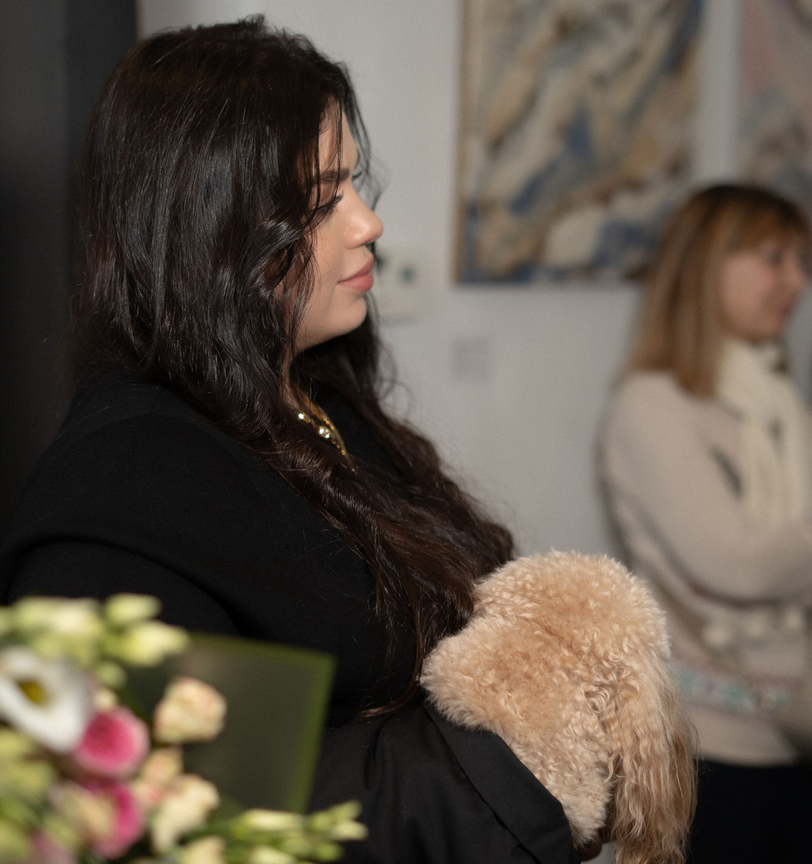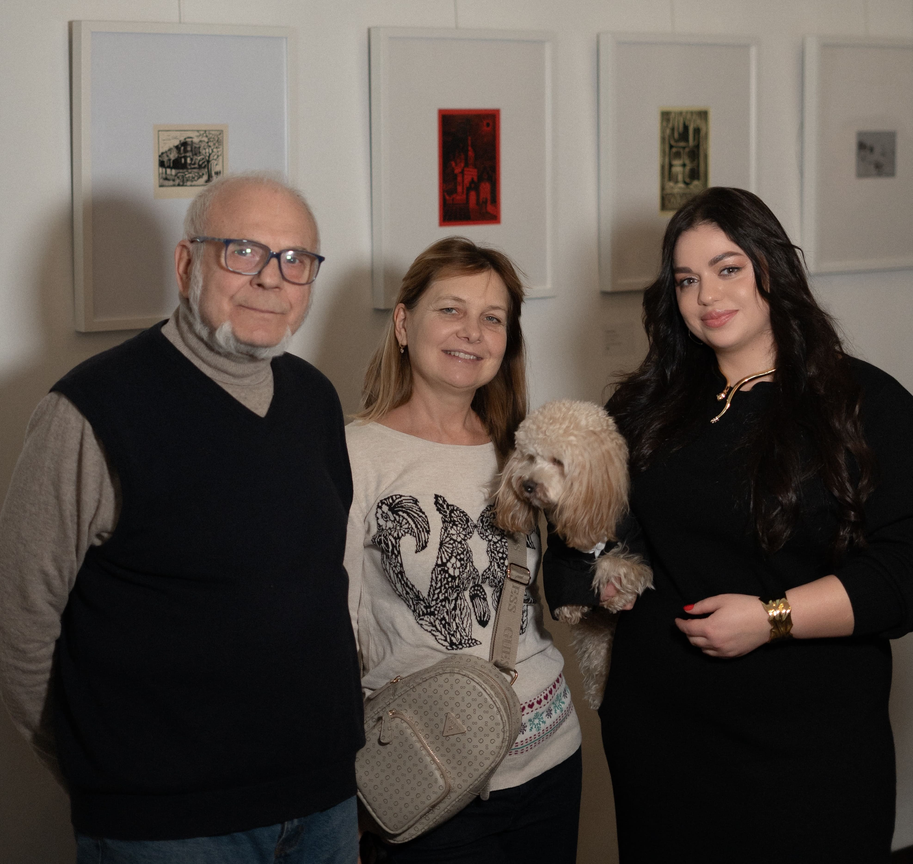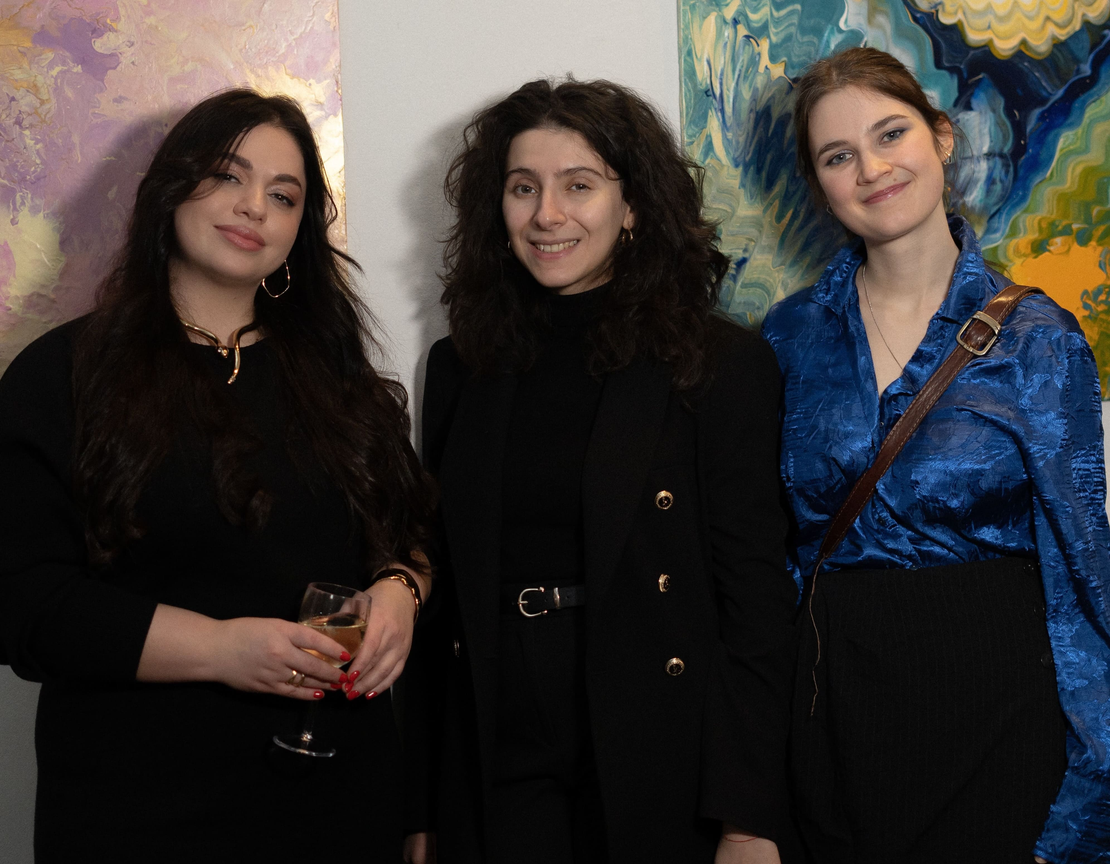Romani Artist Natali Tomenko: “Art Provides a New Perspective on This Time”
Nataliia Tomenko is a researcher and expert in the cultural heritage of the Romani people. She is a human rights advocate, a leader of the Romani youth movement in Ukraine, and the deputy director of the Youth Agency for the Advocacy of Roma Culture “ARCA” in Ukraine. In addition to her human rights and administrative work, Natali is also engaged in visual arts. She is of Romani descent and operates within the discourse of Ukrainian civil society. In an interview with “Djanes”, she shared insights about her debut solo exhibition, “Ukrainian Heritage”, which recently took place in Vienna.
— Natali, first and foremost, what is the key message of your debut exhibition? And how long did it take to create it?
— This exhibition brings together works from different periods—starting from early 2022 up to the present. However, there are also paintings that I created over the past decade. Many pieces are done in abstract techniques, as well as linocuts created during my studies at the Kharkiv State Academy of Design and Arts. The title of the exhibition, “Ukrainian Heritage”, speaks for itself. I consider myself a Romani woman of Ukrainian origin. Ultimately, being Ukrainian is an integral part of my identity. Engaging with social issues within Ukrainian society is crucial for ensuring that the Romani people are fully included in it.

— You wear many hats—human rights advocate, social activist, and manager. Do you identify more as an artist or an administrator?
— In my case, these roles complement each other. At times, managing my schedule can be challenging, but overall, these activities are interconnected. There are periods when I dedicate more time to art, and other times when I focus on administrative responsibilitiesm at the organization. Given today’s social challenges, administrative work is especially important. At the same time, painting is always an opportunity for reflection. It acts as a form of art therapy, where the creative process itself is healing. In abstraction, you don’t always have to think—you can surrender to the process and simply create. Enjoy the palette of colors, shapes, and techniques. Through art, I find visual enrichment, which, in turn, strengthens and inspires me in all other aspects of my work.
— Is It Difficult to be an Artist in the Romani Community?
— When I was choosing a profession, I initially wanted to be a psychologist. However, I enrolled in an art academy to pursue a creative career, which was also something I deeply desired. At the time, earning money from art was not my main concern—I simply wanted to do what I loved. My family has always supported me in everything. For example, my grandfather was the one who first took me to art school; he was a fan of my childhood drawings, where my artistic talent had already begun to show. I grew up without any barriers that could have hindered me. Art, for me, is not a commercial endeavor — it’s something that fulfills me.

— Could you tell us more about the audience for your exhibition in Vienna?
— Since most of the exhibition’s announcements and communications were shared through Ukrainian communication channels, a dominant part of the audience consisted of Ukrainians. However, there were also Austrians and a significant number of people from other national backgrounds who live in Austria. It was heartwarming to see completely unfamiliar faces. For instance, some visitors from Dnipro approached me and shared that their daughter also works with art therapy. They were curious about my methodology and said they would follow my future projects. Moments like these are incredibly motivating and inspiring.
— Do you think there is such a thing as contemporary Roma art? What does it look like today?
— That’s a philosophical question. In the European discourse, Romani artists are often defined as artists of Romani descent. To clarify what this means: Romani people are still fighting for equal recognition in societal processes. There is a common perception that Romani art is “naïve art.” However, some researchers argue the opposite, stating that contemporary Roma art is not naïve but highly relevant today. If we look at artistic movements, Romani art can be compared to African American art in the sense that many artists use their ethnic background as a central theme. This adds visibility to their communities and helps bring their voices into mainstream narratives.
— Who has been your guiding inspiration throughout your creative journey? Any names that come to mind?
As a child, I loved the works of Leonardo da Vinci. I would analyze his codes, paintings, colors, and forms. I also admire Claude Monet, particularly his use of color. I even experimented with oil painting in a similar technique.
As for contemporary influences, my mentor, Anatoly Dyachenko, was a significant figure in my artistic development. He taught me the technique of linocut printmaking, and I have fond memories of our conversations in the studio over tea after classes.Those moments significantly shaped my identity and creative vision.
— Comparing Artistic Experiences in Austria and Ukraine: Is It Difficult to be an Artist Abroad?
— Having lived in Austria for six years, I can honestly say — it’s difficult. In general, it’s hard for foreigners to integrate into so-called creative circles here because these communities tend to be quite closed. In Ukraine, it’s much easier, and that’s what makes it great. There, you can organize a public event of any level if you have the knowledge and skills to do so. Here, however, it’s more complicated — you have to invest a lot of time into networking and building social connections. But despite these challenges, it’s still possible.
— Do you plan to present your exhibition “Ukrainian Heritage” in Ukraine?
— That’s a great question. I hadn’t really thought about it, but I should (smiles). The biggest challenge would be transporting the works, as many of them are large, which creates logistical difficulties. However, I do have a series of smaller prints, which would be much easier to exhibit in Ukraine. Time will tell.
— On Identity: How Do You Define Yourself?
First and foremost, I am a human, then a woman, a Roma, and a Ukrainian.
— Why Is It Important to Create Art During Wartime? And What Are Your Next Projects?
— The exhibition I presented reflects my identity. For example, one of the paintings, “Romani Woman”, is about me — just as all the others are in some way. Moving forward, I plan to focus more on art therapy — to be helpful to others but also to display my art. Why is art important during war? Historically, every period of upheaval has given rise to something new—new styles emerge, some disappear, others take on new meaning. Art has always followed a logical path of evolution. During the war, emotions run high for everyone — whether on the front lines, volunteering, or simply carrying out daily work. Art provides a way to process and rethink this time from a different perspective. At the same time, it’s not easy for artists either. Therefore, they carry out an essential mission which have to be continued.
See also
- Репортажистка Єва Райська: «Через звичайні людські історії я хотіла показати глибші процеси».
- Новий центр підтримки ромів у Сумах: хто отримає шанс на освіту
- Письменниця Тімея Шрек: «Життя так склалося, що повертаюся до коренів».
- Танцівниця Вікторія Чорна: «Саме ромський танок допомагає людям просто вижити»
- Громадські активісти і дослідники — про ромську мову, перспективи розвитку та загрози
- Лінгвіст Михайло Ослон: «За свої мови носіям зазвичай доводиться боротися самотужки».
- Музикант Віллі Пап-молодший: «Американський джаз або ромський джаз...»
- Художник Тиберій Йонаш: «У моїх планах відкрити величезний центр у ромській громаді»
- Психотерапевтка Ольга Голубицька: «Ти є людиною, яка варта уваги».
- Другий шанс на освіту. Або як працюють інтеграційні центри для ромів
